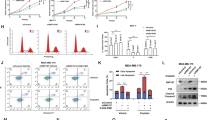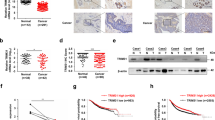Abstract
We previously showed that oncoprotein MDM2 has ubiquitin ligase activity toward tumor suppressor p53. In that paper, we showed very weak homology in the carboxyl terminal portion between MDM2 and E6AP (HECT domain). We mutated the cysteine residue (C464) corresponding to the residue essential for the ubiquitin ligase activity of E6AP and this mutation diminished the ligase activity of MDM2. The cysteine residue described above is also one of the cysteine residues that form the RING finger domain of MDM2. We tried to find out whether the diminishing of the activity by the mutation is attributable to the disruption of the RING finger domain or not. When the ring finger domain of MDM2 was deleted, the truncation mutant did not have the ubiquitin ligase activity. When we mutated the seven cysteine residues of RING finger domain of MDM2 in the carboxyl terminus, the disruption of each residue in the RING finger completely diminished the ubiquitin ligase activity of MDM2 toward MDM2 itself and toward tumor suppressor p53. These data indicate that the RING finger domain in MDM2 is essential for its ubiquitin ligase activity toward p53 and itself.
This is a preview of subscription content, access via your institution
Access options
Subscribe to this journal
Receive 50 print issues and online access
$259.00 per year
only $5.18 per issue
Buy this article
- Purchase on Springer Link
- Instant access to full article PDF
Prices may be subject to local taxes which are calculated during checkout




Similar content being viewed by others
References
Banin S, Moyal L, Shieh S-Y, Taya Y, Anderson CW, Chessa L, Smorodinsky NI, Prives C, Reiss Y, Shiloh Y and Ziv Y . 1998 Science 281: 1674–1677
Boddy MN, Freemont PS and Borden KL . 1994 Trends Biochem Sci 19: 198–199
Canman CE, Lim D, Cimprich KA, Taya Y, Tamai K, Sakaguchi K, Appella E, Kastan MB and Siliciano JD . 1998 Science 281: 1677–1679
Chen J, Marechal V and Levine AJ . 1993 Mol Cell Biol 13: 4107–4114
Ciechanover A . 1998 EMBO J 17: 7151–7160
Haupt Y, Maya R, Kazaz A and Oren M . 1997 Nature 387: 296–299
Honda R and Yasuda H . 1999 EMBO J 18: 22–27
Honda R, Tanaka H and Yasuda H . 1997 FEBS Lett 420: 25–27
Joazeiro CA, Wing SS, Huang H, Leverson JD, Hunter T and Lui YC . 1999 Science 286: 309–312
Kamura T, Koepp DM, Conrad MN, Skowyra RJ, Moreland RJ, Iliopoulos O, Lane WS, Kaelin Jr WG, Elledge SJ, Conway RC, Harper JW and Conway JW . 1999 Science 284: 657–661
Kastan MB and Siliciano JD . 1998 Science 281: 1677–1679
Ko LJ and Prives C . 1996 Genes Dev 10: 1054–1072
Kubbutat MHG, Jones SN and Vousden SN . 1997 Nature 387: 299–303
Lorick K, Jensen JP, Fang S, Ong AM, Hatakeyama S and Weissman AM . 1999 Proc Natl Acad Sci USA 96: 11364–11369
Maki CG, Huibregtse JM and Howley PM . 1996 Cancer Res 56: 2649–2654
Ohta T, Michel JJ, Schottelius AJ and Xiong Y . 1999 Mol Cell 3: 535–541
Scheffner M, Huibregtse JM, Vierstra RD and Howley RD . 1993 Cell 75: 495–505
Shieh SY, Ikeda M, Taya Y and Prives C . 1997 Cell 91: 325–334
Skowyra D, Koepp DM, Kamura T, Conrad MN, Conway RC, Conway JW, Elledge SJ and Harper JW . 1999 Science 284: 662–665
Xie Y and Varshavsky A . 1999 EMBO J 18: 6832–6844
Acknowledgements
We would like to express thanks to Ms Akiko Hotta for her technical assistance. This work was supported in part by a grant-in-aid from the Ministry of Education, Science, Culture and Sports in Japan.
Author information
Authors and Affiliations
Rights and permissions
About this article
Cite this article
Honda, R., Yasuda, H. Activity of MDM2, a ubiquitin ligase, toward p53 or itself is dependent on the RING finger domain of the ligase. Oncogene 19, 1473–1476 (2000). https://doi.org/10.1038/sj.onc.1203464
Received:
Revised:
Accepted:
Published:
Issue Date:
DOI: https://doi.org/10.1038/sj.onc.1203464
Keywords
This article is cited by
-
Sequestration of Gβγ by deubiquitinated arrestins into the nucleus as a novel desensitization mechanism of G protein–coupled receptors
Cell Communication and Signaling (2023)
-
1H, 15N and 13C backbone resonance assignments of the acidic domain of the human MDM2 protein
Biomolecular NMR Assignments (2023)
-
Novel Therapies in Myelofibrosis: Beyond JAK Inhibitors
Current Hematologic Malignancy Reports (2022)
-
1H, 15N and 13C backbone resonance assignments of the acidic domain of the human MDMX protein
Biomolecular NMR Assignments (2022)
-
Transition and identification of pathological states in p53 dynamics for therapeutic intervention
Scientific Reports (2021)



